Introduction
Gate valves are very important in controlling flow of liquids and gas in different industries. They are crucial plumbing, oil and gas as well as other sectors. Anyone involved in installing, maintaining or repairing these devices should know the main parts that make them up. In this article, we shall delve into the intricate anatomy of gate valves by looking at each component’s function and importance to the operation of valve. Whether you are a seasoned professional or just starting out, this manual will give you the principles behind gate valve components and how they are used.
Gate Valve Diagram: A Visual Guide to Key Components
A gate valve diagram is helpful in understanding the different parts of a gate valve. The diagram below provides a clear overview of all the key components and their locations.
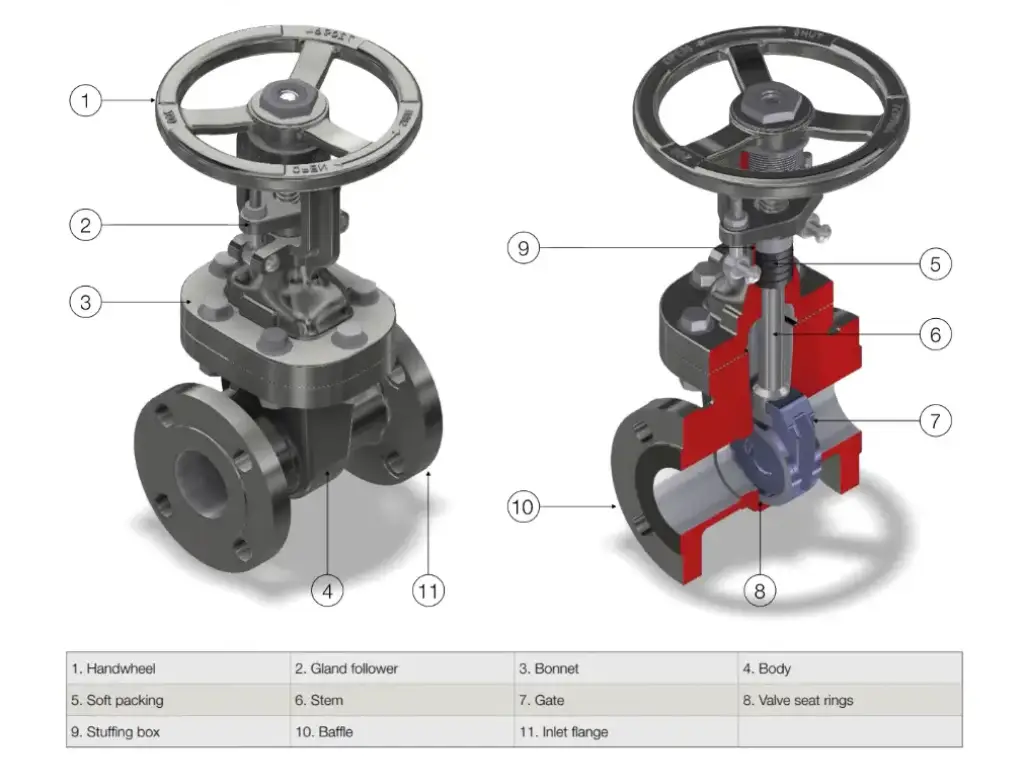
Explaining its function and importance will be done for each part broken down in the following sections. This will help you understand how gate valves work and what you need to do to keep them running smoothly.
Body: The Main Pressure-Retaining Component
The prime pressure-reserving constituent of a gate valve is the valve body which encloses all the internal parts like the stem, gate and seat. It is manufactured to bear the high pressures as well as different temperatures experienced in numerous industrial situations. The materials used to make this part should be robust enough, such as cast iron, brass or stainless steel, so that it cannot fail in a harsh environment. In addition, its integrity is essential for maintaining performance and safety of the gate valve.
The methods of connecting valve bodies to piping systems are many and they are dependent on particular applications and needs. Common connections include flanged, butt weld and threaded ones. Flange connections are commonly employed because they create a tight secure seal with no leakage thus making them easy to install or remove for maintenance purposes easily. Butt weld connections are the best types of connection for high-pressure applications because these joints are solid making them able to resist enormous strain and pressure over considerable periods of time. In smaller lower-pressure systems, where assembly or disassembly ease is an important issue, use threaded connections exclusively. Selection of an appropriate type of connection method ensures effective functioning and service life for the gate valves.
Bonnet Types and Their Applications
Gate valve bonnet is an important accessory which serves as a cover enclosing the body of the valve and provides approach to inner parts for maintenance and repair. There are different kinds of Bonnets in place today each designed to meet specific applications and requirements. Knowing about these types will be helpful when choosing a suitable bonnet.
Screwed Bonnet
Screwed bonnets are simple and cost-effective, ideal for low-pressure applications where need for frequent maintenance is minimal. Actually, these bonnets are simply screwed onto the valve bodies, making them easy to assemble or take apart. They find common use in small-size valves as well as systems where accessibility and affordability supersede ability to handle high pressure.
Bolted Bonnet
Bolted bonnets provide more secure seals compared to screwed ones therefore they can be used in medium to high-pressure situations. This type is bolted onto the valve body thus ensuring tighter and more reliable sealing. It is usually preferred in industrial settings due to higher pressures that affect the system as well as regular inspection plus servicing. In addition, bolting makes it easier when replacing components or repairing them once faulty.
Pressure Seal Bonnet
Pressure seal bonnet is best for high pressure applications while having this kind of unique design on a bonnet enables them have proper seal especially under extreme conditions (pressures). The greater internal pressure, the tighter the seal becomes. Therefore, it will make it ideal for power plants, chemical processing among others. Therefore, there meals that must always be guaranteed by using such designs where constant tightness is required in terms of its applications.
Welded Bonnet
The welded bonnets offer a permanent seal and are used in applications where the valve doesn’t require regular disassembling. These bonnets are welded onto the valve body to form a leak tight as well as tamper-proof connection. They are suitable for high pressure and high temperature applications with less maintenance required and dependability is paramount, such as the transport of dangerous substances through pipelines.
Gate Mechanisms: Wedge, Knife, Slab, and Parallel Slide Gates
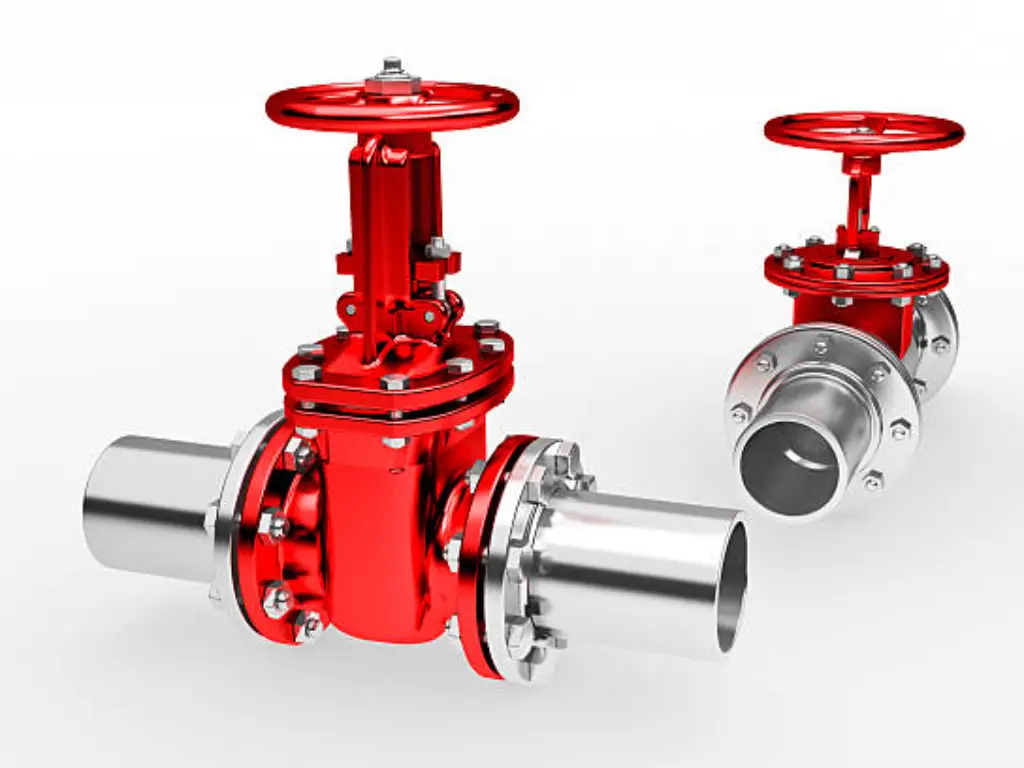
The gate mechanism serves as a controlling point for fluid flow in a gate valve. Different types of gate mechanisms are designed to address specific requirements and applications. There are four most common types: Wedge gates, Knife gates, Slab gates and Parallel slide gates, which we shall explore hereunder.
Wedge Gates
Wedge gates are among the most commonly used mechanisms in gate valves. It is characterized by a tapered gate fitted tightly between two tilted seats to provide a watertight seal when the valve is shut off tight. Its design makes it highly effective for use where reliable shutoffs are essential like water supply systems, steam lines and general flow control purposes. This feature of wedge gates enables it to prevent leakages hence remaining efficient.
Knife Gates
Knife gates can be used where thick fluids or slurries need to be handled. This type features a thin sharp edge that allows clearing of viscous materials preventing obstructions for fluid passage. These types of gates are usually found in such industries as mining industry, waste water treatment plants and paper making companies due to sediments or other solid particles present in their pipeline flows which can cause blockages. Knife gates also have the ability to cut through such materials, making them very important parts in those environments.
Slab Gates
Slab gates are simple flat gates that simply slide into place to regulate flow. The design is plain and cost-effective, making it perfect for crude oil, gas, and other non-corrosive fluids. In many cases, the slab gate is used in systems and pipelines where minimum resistance plus pressure drops are needed. It has a simple design facilitating easy maintenance and repair, hence it is widely used in the oil industry.
Parallel Slide Gates
Parallel slide gates use two discs that are parallel to each other which form a seal when the gate is closed. Such a mechanism design is useful in high pressure as well as high temperature applications such as power plants or chemical processing industries among others. For this reason the parallel slide gate provides a tight seal without much closing force required thus minimizing component wear on valves. This type of mechanism woks best where it’s necessary to maintain proper seals under harsh conditions.
Seat Configurations: Ensuring a Secure Seal
The seat of a gate valve is the place where the gate makes contact to make a seal. Different gates have various requirements for their seats so as to ensure that they can form a tight seal and hence optimum performance. We shall, therefore, delve into the seat designs for four types of gates, such as wedge, knife, slab and parallel slide.
Wedge Gate Seats
In wedge gate valves, the seats are typically inclined to match the angle of the wedge gate. This design ensures a tight seal when the gate is closed, preventing leaks. The seats can be integral to the valve body or can be separate, replaceable components. When worn out, it becomes easier to replace them with other ones hence beneficial in terms of maintenance.
Knife Gate Seats
Knife gate valves require seats that can accommodate the sharp edge of the gate. These seats are often made from resilient materials like rubber or plastic to withstand the cutting action of the knife gate. Even during reaming through debris or thick fluids by this knife-like mechanism there is still no leakage because of its flexible sealing material.
Slab Gate Seats
Slab gate valves have flat seats that match the surface of the slab gate. This straightforward design ensures a proper seal when the gate is in closed position. Flat seat configuration has minimal maintenance requirements and good dependability for crude oil and noncorrosive fluid applications.
Parallel Slide Gate Seats
In parallel seating valve gates, there are two seats that align with the closing of the gate to create a seal. This design is suitable for high pressure and temperature applications, and ensures that it seals tightly without exerting much force during the closing process. By using parallel seat configuration, the wear on valve components is reduced and it is also useful in critical applications where maintaining the proper sealing is crucial.
Stem Design: Rising vs. Non-Rising Stems
The stem in a gate valve is important because it causes the gate to move either up or down and thereby opening or closing the valve. Rising stems and non-rising stems are two basic designs of steam with distinctive characteristics and application areas.
Rising Stems
Rising stems are designed so that the stem moves up and down as the valve is operated. Movement of the stem can be viewed to ascertain if the gate is closed or open. The stem extends when open, but retracts on being closed. This design is especially useful in above-ground installations where there should be quick glance of how a valve is set. Vertical spaces required for such rising stems may, however, limit their use in cramped settings. These are widely seen in water supply systems, plumbing, and industries where position checking is visually paramount.
Non-Rising Stems
In non-rising stem designs, the stem does not move up and down; instead, it rotates to open or close the gate. The threads of this gate seek connection with those of its own remaining part that has been screwed into it by turning its spindle up or downwards. This type of construction suits limited vertical space such as underground installations without external visibility needs. Non-rising stems commonly feature fire protection systems, irrigation systems, restricted spatial requirements among others. In addition they protect against element damage externally, hence they can be used for harsher environments.
Actuation Methods: Manual, Pneumatic, and Electric
The method by which a gate valve is driven determines the way the valve itself works, with each one having its own merits depending on the application.
Manual Actuation
Manual actuation occurs when you turn a handwheel or flip a lever to move the manual gate valve. In this case, it is simple and cheap while being fit for cases where it does not require frequent operation. Manually operated gate valves are usually used in small industrial facilities as well as domestic plumbing installations where there is less need for automation. Manual actuation is easy to use and maintain because of its simplicity.
Pneumatic Actuation
This means employs compressed air for valve movement, thus allowing remote or automatic control. This technique suits applications in which rapidity and precision are required like in chemical plants, industrial processes, and fluid handling systems. Pneumatic actuators are useful particularly in dangerous atmosphere due to their non-sparking nature and low risks of fire outbreaks. They function effectively with minimum failures, especially in situations involving high-frequency cycling of valves.
Electric Actuation
Electric actuation involves the use of an electric motor to drive the valve thereby giving precise control and automation. It can best be applied in circumstances requiring remote operation as well as integrations with control systems such as major manufacturing facilities, water treatment plants and HVAC installations. Electric actuators have great positioning accuracy that can be easily controlled by digital systems, therefore they are suitable for automated processes and when specific valve position is critical.
Installation of Gate Valve Parts: Best Practices and Tips
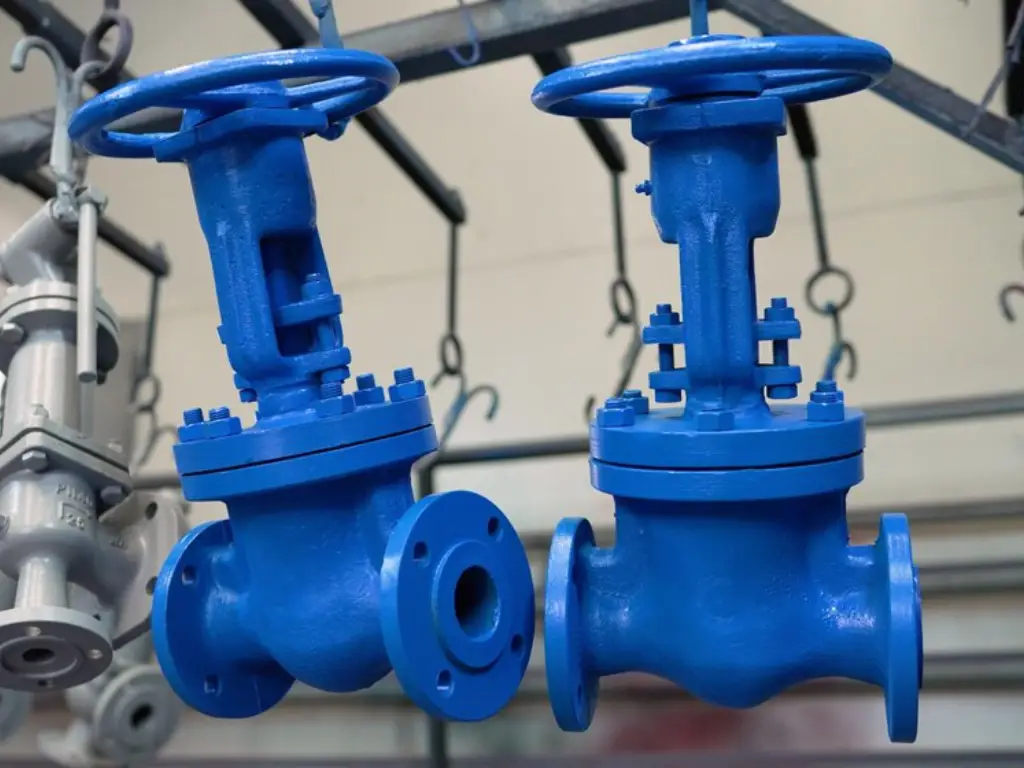
Proper installation of gate valve parts is essential for ensuring the valve’s optimal performance and longevity. Start by ensuring that all components are clean and free from debris, which can cause leaks and damage. When installing the valve body, make sure it is properly aligned with the piping system to prevent stress and potential failure. Use the appropriate fittings and ensure that all connections are secure.
During installation, pay special attention to the bonnet and stem to ensure they are correctly positioned and sealed. Lubricate the stem and other moving parts to reduce friction and wear. When installing the seat and gate, make sure they are properly aligned to ensure a tight seal. Following these best practices and tips will help you achieve a reliable and efficient gate valve installation.
Common Issues and Maintenance Tips for Gate Valve Parts
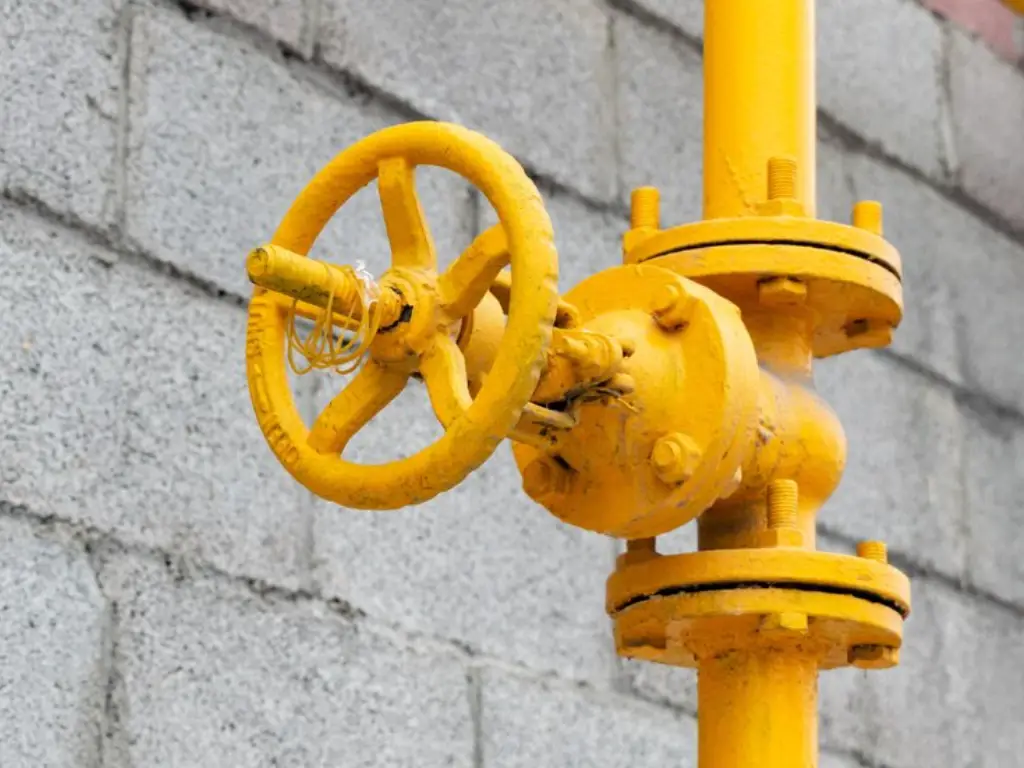
Gate valves have various recurrent problems including, leaks, wear and tear, and corrosion. Maintaining it regularly is essential to curb these problems so that the valve lasts long. Inspect the body of the valve, bonnet and stem for any signs of wear or damage. Replace all worn-out or damaged parts immediately to avoid leakage and collapse.
For reduced friction as well as weariness, oil up the stem in addition to other mobile sections at regular intervals. To enable a proper seal clean the seat and the gate by eliminating debris from them. Should there be any obstructions in this disc cavity the valve will not move smoothly, check for them then remove them. If you follow these maintenance tips, you will keep your gate valve operating optimally for longer than expected.
Conclusion
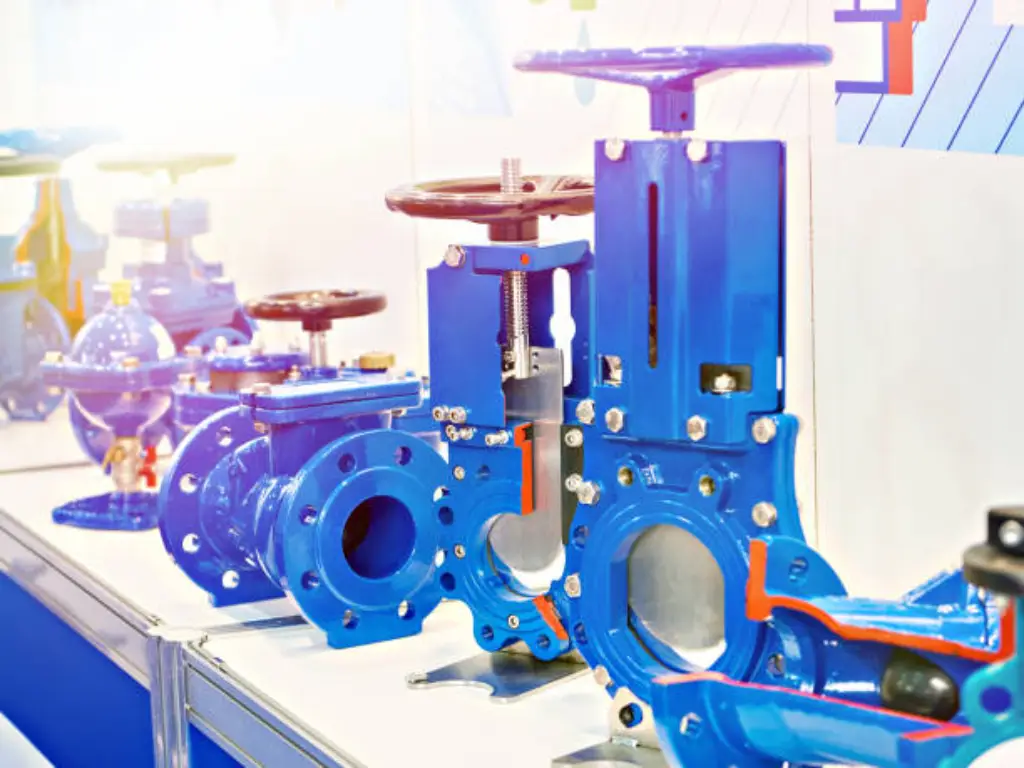
Knowing the functions of different parts of a gate valve is important in order to install, maintain and operate it correctly. It is essential that each of these elements performs well, from the body and bonnet to the stem and seat. If you need top-notch gate valves with first-class services, try Dombor. Our products are designed to meet the highest standards and thus guarantee durability and effectiveness in any sphere where they are used. Please visit Dombor today for an array of our gate valves which can help you acquire fluid management as you have never seen before!









